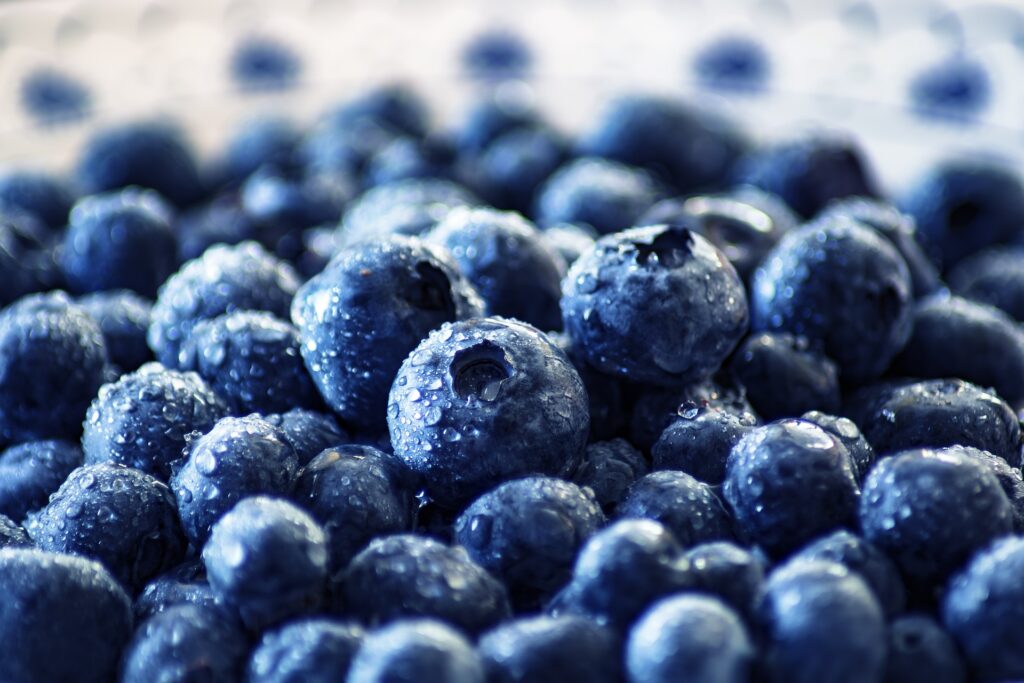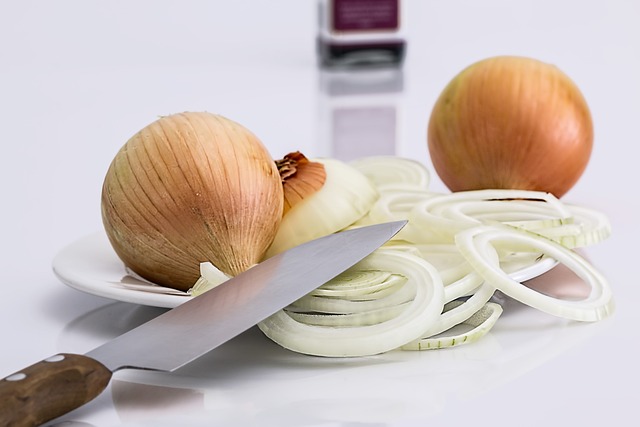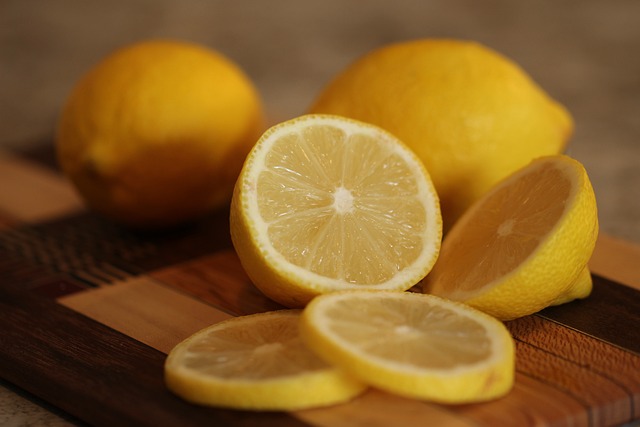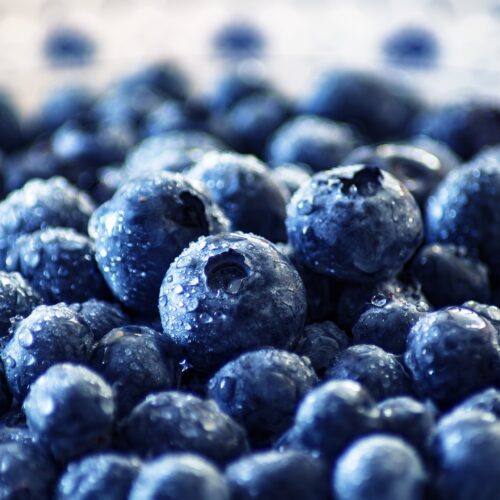Looking for a new way to enjoy blueberries? Look no further than my newest adventure – blueberry hot sauce! This sauce is the perfect addition to your condiment collection.
Blueberries are a delicious fruit that can be enjoyed in many different ways. It’s a simple way to add some fruity heat to your favourite dishes. Plus, making this sauce is a great way to use up any extra berries that you have on hand. The recipe is simple, and it only takes a few minutes to make. So give it a try – you won’t be disappointed!

What is blueberry hot sauce?
Blueberry hot sauce is a type of condiment made from blueberries, vinegar, and chilli peppers. It is used as a flavorful addition to food and can add a sweet and spicy kick to dishes.
The sauce is believed to have originated in Mexico, where blueberries are native. However, it has also been popularized in the United States by immigrant communities from Mexico and Central America. It is a popular ingredient in recipes for salsas, marinades, and dressings.
Whether you’re looking to add some new flavour to your food or to spice up your cooking, blueberry hot sauce is a great option.
Why make this hot sauce?
There are many reasons to make this blueberry hot sauce at home.
- Blueberries are an excellent source of antioxidants, which can help to protect your cells from damage and improve your overall health. Blueberries are also relatively low in calories.
- This fruity hot sauce is very versatile and can be used in a variety of recipes, from chicken wings to salad dressings.
- You can make this delicious sauce with fresh or frozen blueberries, so you don’t have to wait for blueberry season. You can enjoy this sweet and spicy treat any time of the year.
- The berries provide beautiful colour and flavour, as well as lend a tartness that can brighten up a dish. And, of course, the heat from the chilli peppers gives blueberry hot sauce its signature zing.
So if you’re looking for a healthy, delicious, and easy-to-make condiment, blueberry hot sauce is a great option.
Making a fruity hot sauce
This sauce is another great way to extend your enjoyment of blueberries. The high acidity of the blueberries, together with the vinegar helps to preserve the sauce and the sugar content helps to keep it from spoiling too soon.

To make blueberry hot sauce, soften and caramelise the chopped onion over medium heat. Then you add the blueberries. Once the berries start to soften, add the vinegar and spices. Stir and bring the mixture to a boil, and then simmer for about 10 minutes. Remove the pot from the heat and let it cool slightly. Once it’s cooled, transfer the mixture to a blender and blend until smooth. Or use an immersion blender for this step. Be careful as the liquid is HOT from the heat and the chilli peppers!
Decide about how smooth or not, and how thick you want your sauce to be and make adjustments accordingly (see below). Then pour the sauce back into the pan, and add the sweetener and some water – I have used honey in this recipe. Cook for around 10 minutes, then pour the sauce into jars and screw on the lids.
Once cooled, store in the refrigerator or freeze. You can also process the sauce to facilitate a longer shelf-life.
TIPS for making savoury blueberry sauce
The ingredients
1. Use blueberries that are ripe and sweet for the best flavour.
2. You can improve the flavour of the blueberries if they are not at their best. Add a touch of sugar/honey/maple syrup to balance out the tartness of the blueberries. This sweetness with a bit of lemon juice can revive low-taste or too-sour blueberries.
Lemon juice can freshen and heighten the flavour; as can soaking them in a mixture of this lemon with honey +/- a splash of whisky. The whisky adds a depth of flavour and as the alcohol burns off during the cooking, there is no risk of intoxication here! You can of course just use some water instead of alcohol.

3. Lemon juice also limits the discolouration of the sauce – lime juice or citric acid can perform the same role.
4. Use a mix of hot chilli peppers for heat, or just one type, with the seeds removed, for a milder sauce. Tailor make this to your needs and heat tolerance.
The cooking
5. Beware! Make sure to wear disposable gloves when handling the chillies. De-seeding chillies can cause harm as the juice from the pepper can burn your eyes and skin.
6. Open the windows to air out the vinegar and chilli vapours as the mixture cooks, as the vapours can sting your eyes and scent your whole house!
7. Caution! Be careful to avoid and limit the steam build-up that can happen when hot liquids are enclosed in a small space in the blender. Or use an immersion blender carefully in the hot liquid. In both cases proceed with caution to avoid the potentially harmful splatter of hot liquids.
The finish
8. Decide whether you prefer either a textured or smooth sauce. For smoothness, proceed as per the recipe. For some texture, either avoid blending or set aside some of the cooked sauce with pieces of blueberries and add this back to the rest of the blended sauce ahead of bottling.
9. While I prefer to thicken the sauce by cooking it a bit longer until it reaches my desired consistency (and concentrates the flavour even more), you can also use a thickener to do this instead.
Cornstarch – 1 tablespoon made up into a slurry with water, added in small amounts and allowed to cook through until the sauce thickens. If needed, continue to add small amounts of the cornstarch slurry until you are satisfied with the thickness of the sauce. Keep in mind that as the sauce cools it will thicken further.
Customising your spicy blueberry sauce
1. Add a bit of chipotle spice or smoked paprika for smokiness. This is especially good if the sauce is going to be used mainly with savoury dishes.
2. Use a different hot pepper for variety – birds-eye, jalapeno, serrano, scotch-bonnet peppers. Select according to preferred flavour and heat.
3. You may want to add some additional spices e.g.all-spice, nutmeg or cinnamon for warm exotic notes or some cumin for its distinctive earthiness.
4. You could also try adding a little bit more honey or agave nectar for a sweeter sauce fruity hot sauce. Or try different sweeteners e.g brown sugar. Just make sure that it dissolves completely when cooking.

5. Add another fruit proportionately to the total amount of fruit for this recipe. e.g. apricot, orange, or any of the other berries.
By experimenting with different flavours and textures, you can create a sauce that is perfectly unique to you.
Suggestions for using a fruity hot sauce
1. As a condiment for your favourite savoury dishes. Stir some into a butternut soup for something just a bit different!
2. Use the sauce on its own or stirred through some yoghurt or cream cheese as a dipping sauce for appetizers or finger foods.
3. Mixed into mayonnaise or other salad dressings.
4. Drizzled over grilled meats or fish. Or add to a marinade blend.
5. You can use it in place of ketchup on burgers or hot dogs. Or add it to your next grilled cheese sandwich for a taste explosion!
6. This berry hot sauce can be a new and flavorful addition to your breakfast eggs. It is good with just about any egg dish!
7. Try it stirred through pasta, rice or steamed vegetables.
So don’t be afraid to experiment – the blueberry hot sauce is versatile and delicious, and it just might become your new favourite way to spice things up in the kitchen.
This fruit sauce packs a bite and is perfect for those who want to add some spice to their food. Blueberry hot sauce is a great addition to your condiment range. The recipe is easy to follow and can be tailored to your taste in several ways.
Give this recipe a try and set out on a new saucy adventure!

Blueberry hot sauce recipe
Equipment
- Kitchen scales
- Colander
- Chopping board and knife
- Large saucepan
- Long-handled spoon for stirring
- Ladle
- Funnel
- Blender or immersion blender
- Fine mesh strainer
- Clean, sterilised glass jars/bottles with sealable lids
- Optional: squeezy sauce bottles with air-tight caps.
Ingredients
- 1 tsp oil
- 1.5 cups blueberries
- ½ red onion
- 1 cup apple cider vinegar
- ½ lemon, zested and juiced
- ½ tsp salt
- 2 cloves garlic, finely chopped
- 1 cm ginger , finely chopped
- 2 tsp Worcestershire sauce
- ½ cup sugar
- 8-10 chillies / 2 medium Habanero peppers – deseeded(or not for realfire), tops cut off and chopped up
Instructions
- To caramelize onions, begin by heating oil in a small saucepan on low heat. Add the onions and sauté for 4 to 5 minutes, or until they are browned and soft.
- Next, add the garlic, ginger and chillies. Cook for 1-2 minutes.
- Add the rest of the ingredients, except the sugar, and bring to a boil over medium heat. Reduce the heat and simmer for 10 minutes.
- To avoid scorching, stir occasionally and allow the mixture to slowly reduce to a thicker consistency.
- Remove from heat and let cool slightly.
- In a blender or food processor or with an immersion blender, puree the blueberry mixture until smooth.
- Pass through a fine mesh strainer, pressing on solids to extract as much liquid as possible. Discard solids.
- Return strained liquid to saucepan.
- Add sugar +/- some water and bring to a boil over medium heat. Reduce heat and simmer for 10 minutes. It is at this stage that you can decide whether you want a thicker sauce or not.
- Remove from heat and let cool slightly.
- Transfer the sauce to sterilised glass jars or bottles and seal.
- Store the sauce in the refrigerator for up to 2 weeks and/or freeze as needed.
- If you portion the sauce into freezer-safe containers, freezing will make it last up to 3 months. To use, allow it to thaw overnight in the fridge. If you want to serve it warm, reheat it gently.
Notes
TIPS for making savoury blueberry sauce
The ingredients
1. Use blueberries that are ripe and sweet for the best flavour. 2. You can improve the flavour of the blueberries if they are not at their best. Add a touch of sugar/honey/maple syrup to balance out the tartness of the blueberries. This sweetness with a bit of lemon juice can revive low-taste or too-sour blueberries. Lemon juice can freshen and heighten the flavour; as can soaking them in a mixture of this lemon with honey +/- a splash of whisky. The whisky adds a depth of flavour and as the alcohol burns off during the cooking, there is no risk of intoxication here! You can of course just use some water instead of alcohol.The cooking
5. Beware! Make sure to wear disposable gloves when handling the chillies. De-seeding chillies can cause harm as the juice from the pepper can burn your eyes and skin. 6. Open the windows to air out the vinegar and chilli vapours as the mixture cooks, as the vapours can sting your eyes and scent your whole house! 7. Caution! Be careful to avoid and limit the steam build-up that can happen when hot liquids are enclosed in a small space in the blender. Or use an immersion blender carefully in the hot liquid. In both cases proceed with caution to avoid the potentially harmful splatter of hot liquids.The finish
8. Decide whether you prefer either a textured or smooth sauce. For smoothness, proceed as per the recipe. For some texture, either avoid blending or set aside some of the cooked sauce with pieces of blueberries and add this back to the rest of the blended sauce ahead of bottling. 9. While I prefer to thicken the sauce by cooking it a bit longer until it reaches my desired consistency (and concentrates the flavour even more), you can also use a thickener to do this instead. Cornstarch – 1 tablespoon made up into a slurry with water, added in small amounts and allowed to cook through until the sauce thickens. If needed, continue to add small amounts of the cornstarch slurry until you are satisfied with the thickness of the sauce. Keep in mind that as the sauce cools it will thicken further.Customising your spicy blueberry sauce
1. Add a bit of chipotle spice or smoked paprika for smokiness. This is especially good if the sauce is going to be used mainly with savoury dishes. 2. Use a different hot pepper for variety – birds-eye, jalapeno, serrano, scotch-bonnet peppers. Select according to preferred flavour and heat. 3. You may want to add some additional spices e.g.all-spice, nutmeg or cinnamon for warm exotic notes or some cumin for its distinctive earthiness. 4. You could also try adding a little bit more honey or agave nectar for a sweeter sauce fruity hot sauce. Or try different sweeteners e.g brown sugar. Just make sure that it dissolves completely when cooking.Suggestions for using a fruity hot sauce
1. As a condiment for your favourite savoury dishes. Stir some into a butternut soup for something just a bit different! 2. Use the sauce on its own or stirred through some yoghurt or cream cheese as a dipping sauce for appetizers or finger foods. 3. Mixed into mayonnaise or other salad dressings. 4. Drizzled over grilled meats or fish. Or add to a marinade blend. 5. You can use it in place of ketchup on burgers or hot dogs. Or add it to your next grilled cheese sandwich for a taste explosion! 6. This berry hot sauce can be a new and flavorful addition to your breakfast eggs. It is good with just about any egg dish! 7. Try it stirred through pasta, rice or steamed vegetables. So don’t be afraid to experiment – the blueberry hot sauce is versatile and delicious, and it just might become your new favourite way to spice things up in the kitchen.Nutrition
Nutritional Disclaimer
All nutritional information is an estimate only, based on third-party calculations derived from an online nutritional calculator, Spoonacular API. The data provided is a courtesy and should not be considered a guarantee or fact. Each recipe and nutritional value will vary depending on the ingredients and brands you use, your measuring methods and portion sizes. For accurate results, we recommend that you calculate the nutritional information yourself, using a preferred nutritional calculator or advice from a nutritionist, based on your ingredients and individual processes.